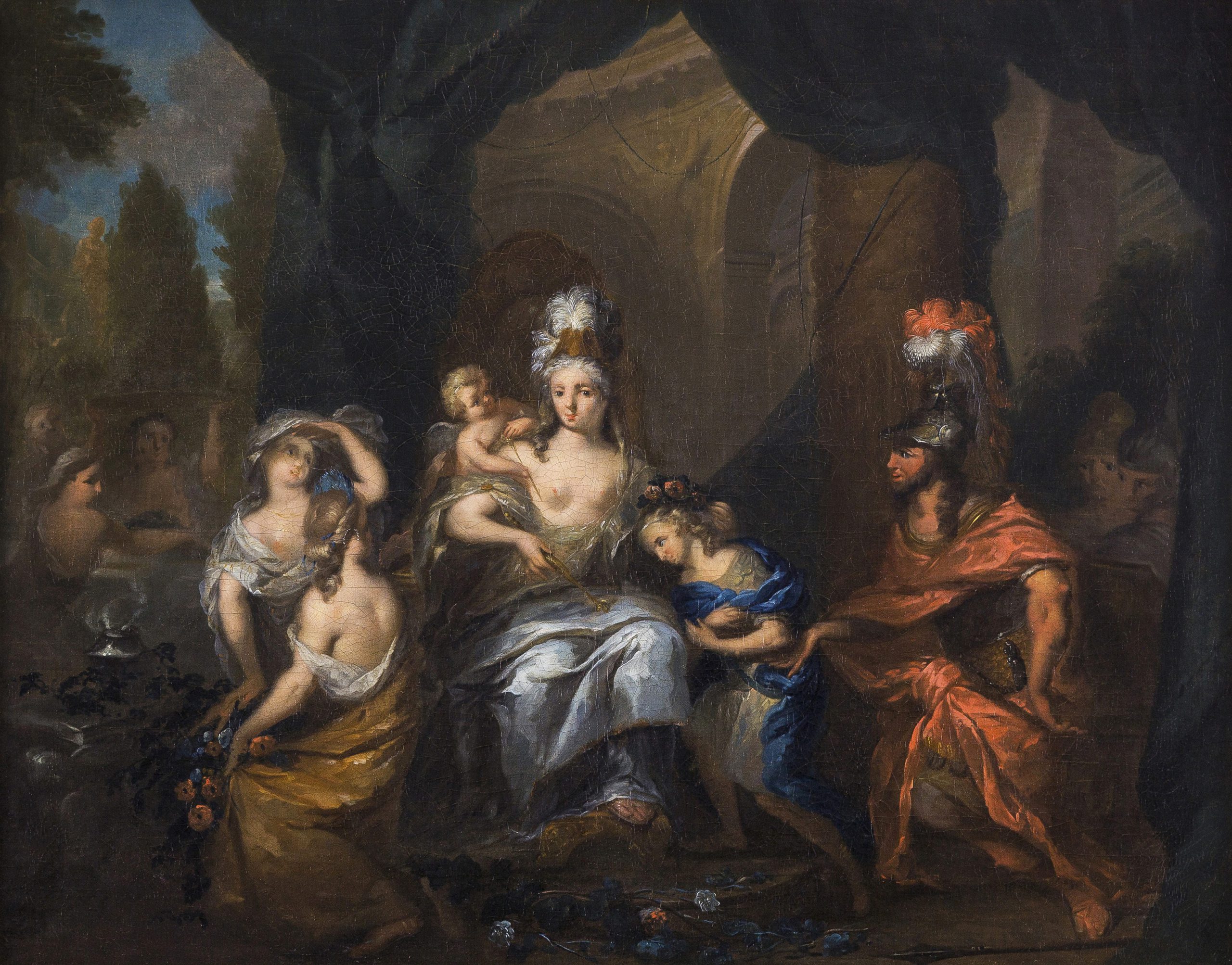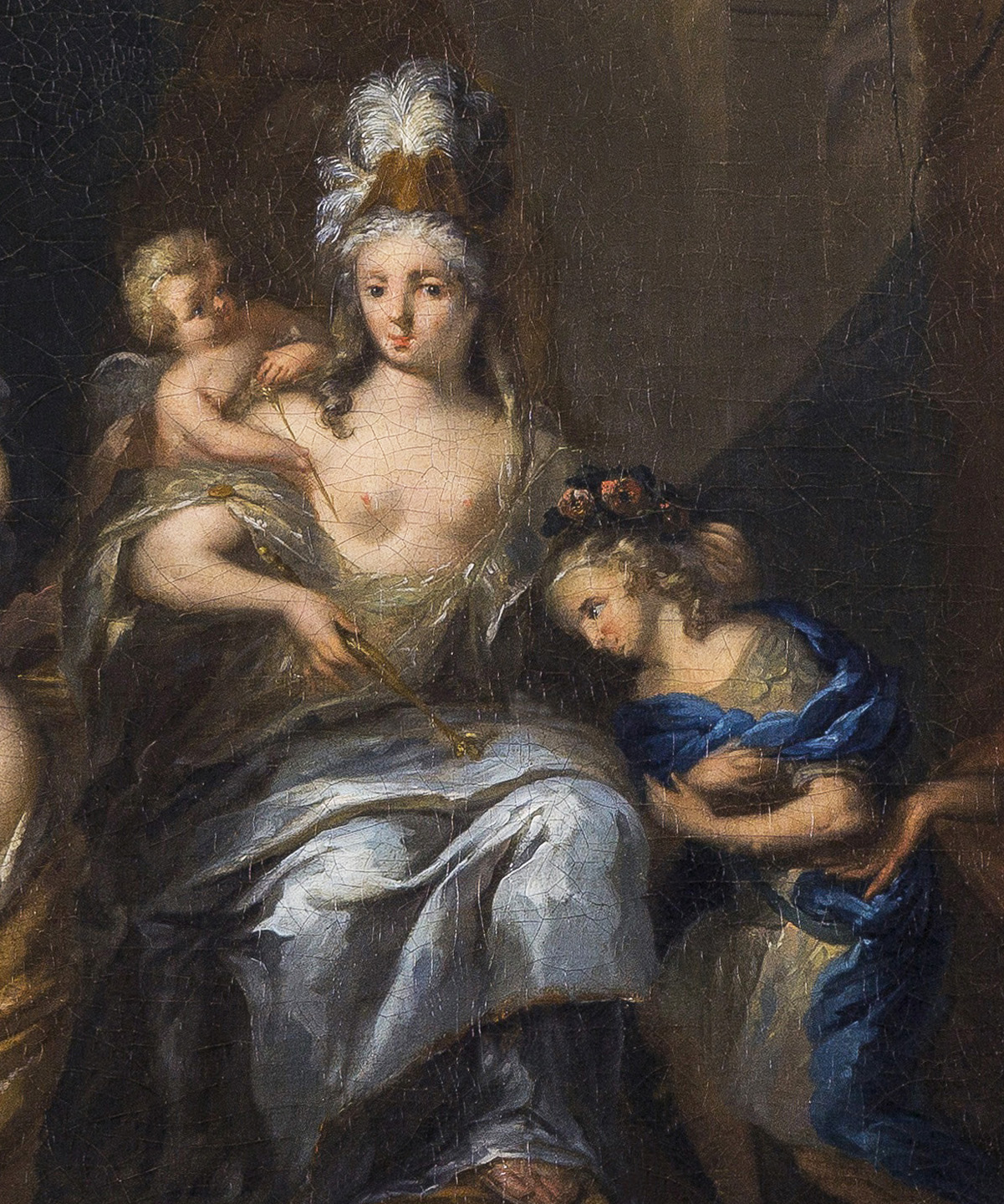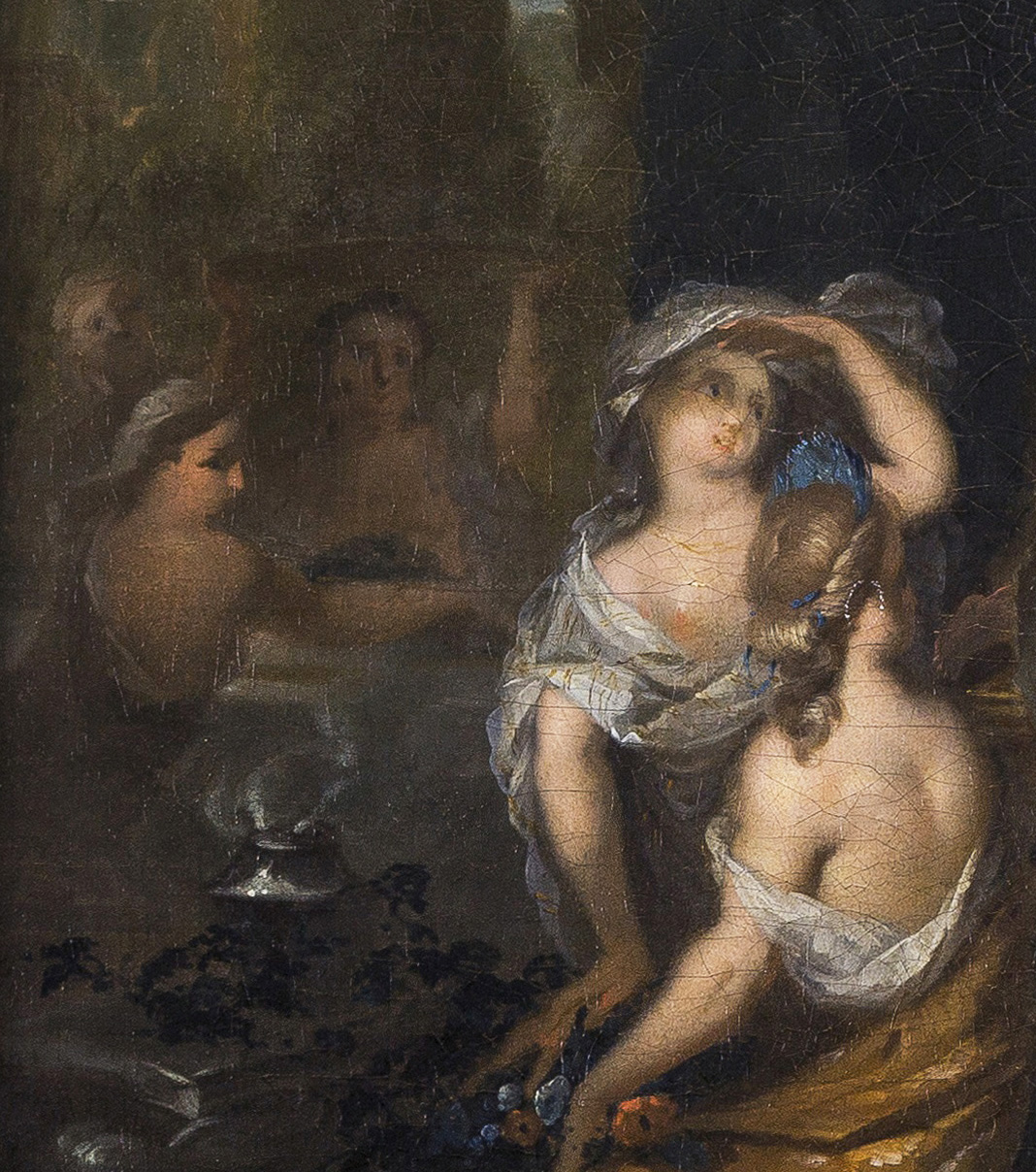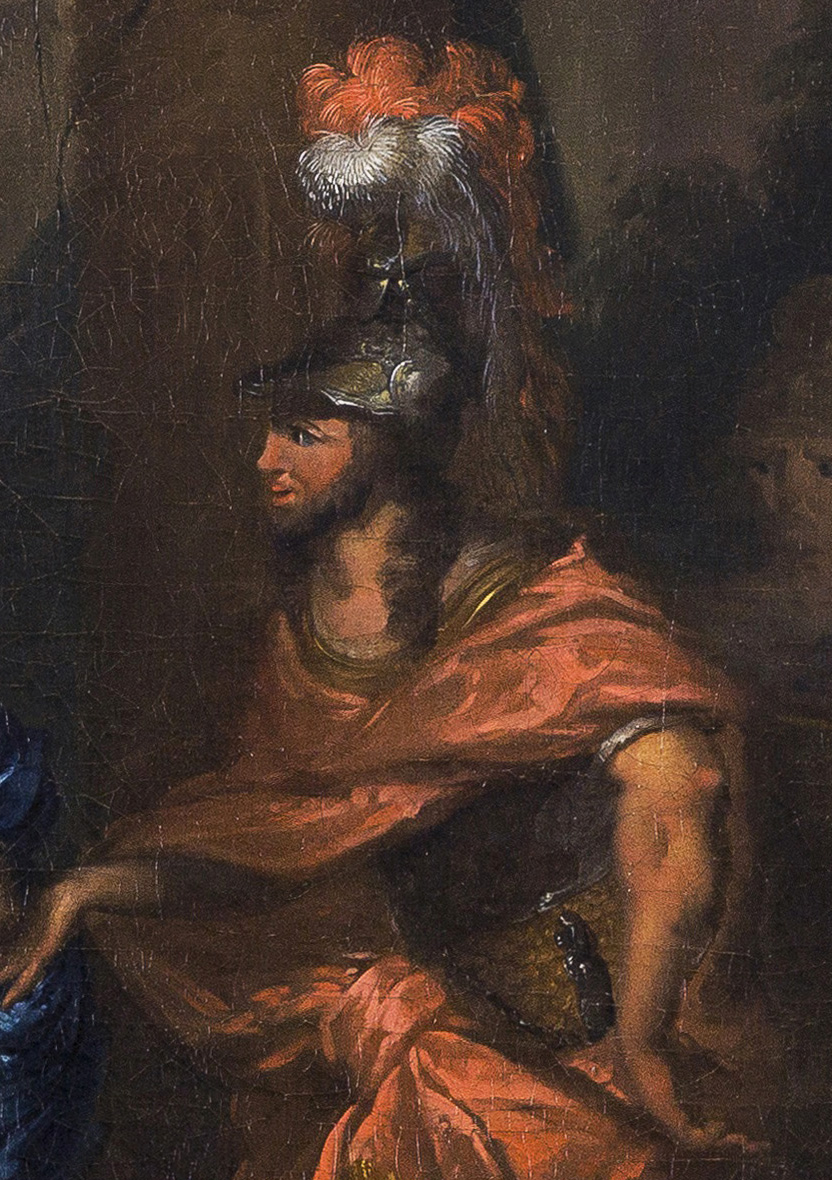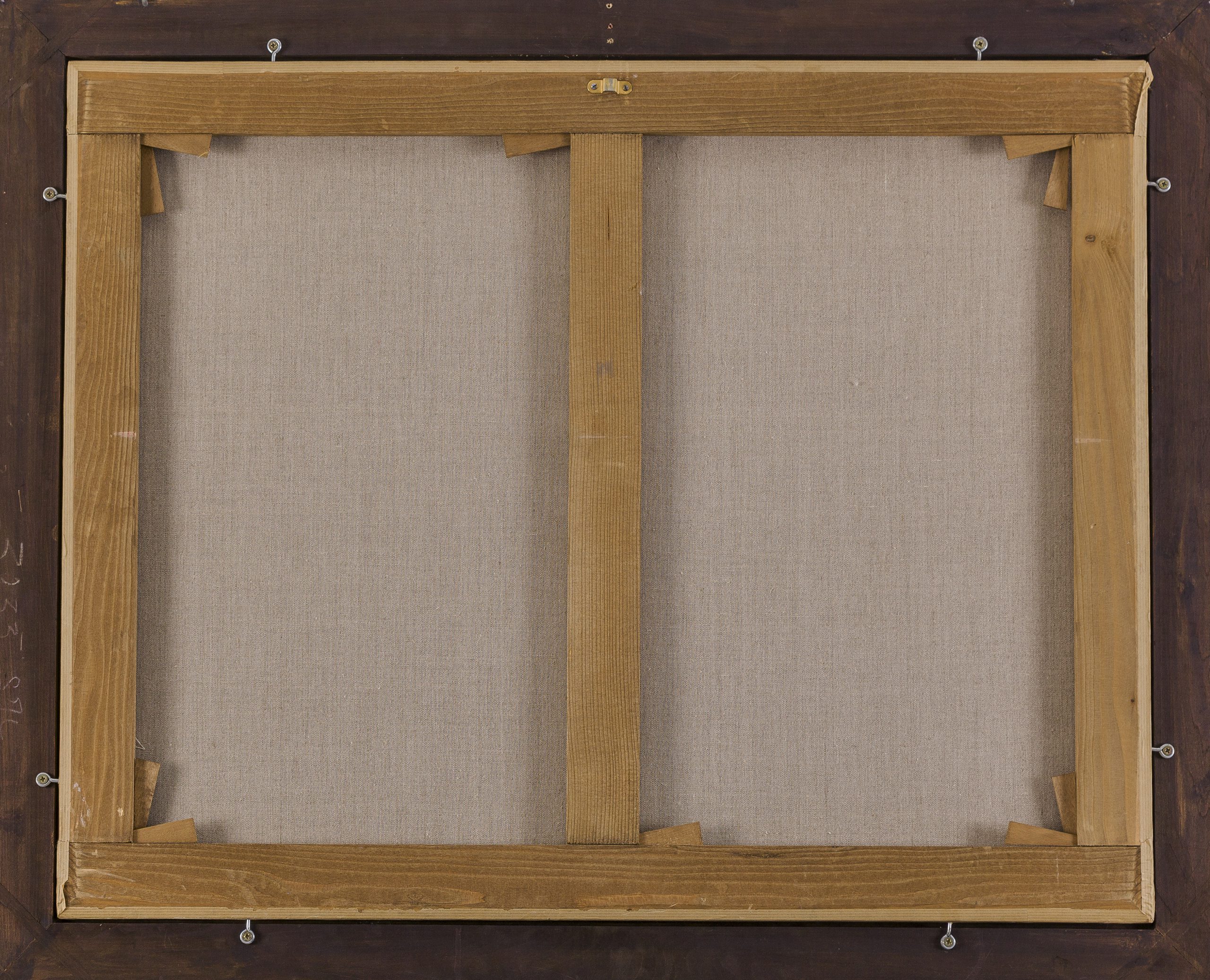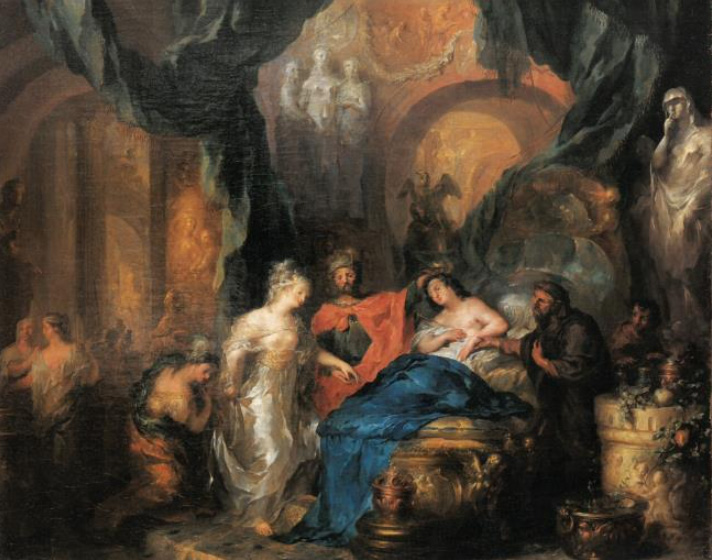OTTOMAR ELLIGER THE YOUNGER (Hamburg 1666 – 1732 Amsterdam)
Ottomar Elliger the Younger (Hamburg 1666 – 1732 Amsterdam)
Aeneas Presenting Ascanius to Dido
Oil on canvas, 90 x 107 cm (35.4 x 42.1 inch); contained in a carved and gilded Rococo frame
Provenance
Private collection, Italy
***
Ottomar Elliger was born in Hamburg in 1666 as the son of the Danish-born flower painter Ottomar Elliger the Elder (1633–1679), who in 1660 had married Teuntje van Walscapelle in Amsterdam, the half-sister of the still-life painter Jakob van Walscapelle.1 Ottomar the Elder was appointed court painter to Prince Friedrich Wilhelm von Brandenburg in Berlin, where the young Ottomar spent his juvenile years, and where he received his first education in the art of painting from his father. Upon the latter’s early death in 1679, the family moved to Amsterdam and Ottomar was apprenticed to Michiel van Musscher. From 1686 he collaborated with Gerard de Lairesse, the leading Amsterdam painter of the time, whose refined and Classicist style proved highly influential to Elliger. De Lairesse specialised in subjects taken from Classical mythology and Ancient history, which were also adopted by Elliger – these subjects were the most highly valued themes during the period, undertaken only by the best artists, who thereby illustrated their intellectual prowess and ability to devise complicated compositions.
Although they were influenced by those of De Lairesse, the paintings by Ottomar Elliger have an entirely personal character, sweeter and more colourful than Lairesse. Elliger’s figures and faces are very characteristic, and handled the brush in a loose and spontaneous manner, more so than Lairesse’s clean Classicism. Elliger’s refined and elegant style proved highly popular. In 1716 he was attracted by Lothar Franz von Schönborn, Archbishop-Elector of Mainz and one of the leading princes of the German states, to work as his court painter. Dutch painters were especially valued at the princely courts of Germany, as they were considered the finest painters in the world.
The subject of our well preserved painting is taken from the epic poem Aeneid, by the Roman author Virgil. The Trojan hero Aeneas, son of the Goddess Venus and mythical founder of Rome, is here presented at the court of the Carthaginian Queen Dido, on the North African coast. In order to keep a close eye on proceedings, Venus sent her other son Cupid, disguised him as Aeneas’s son Ascanius, who then made Dido and Aeneas fall in love. Elliger is known to have depicted scenes from the Aeneid on several other occasions.
Paintings by Elliger can be found in some of the world’s leading museums, especially in Germany, including the Germanisches Nationalmuseum in Nuremberg, the Bayerische Gemäldesammlungen in Munich and the Schloss Gottorf (Kulturstiftung des Landes Schleswig-Holstein) in Schleswig. Our work can for instance be compared to Elliger’s Antiochus and Stratonice of c.1717 in the collection of the Hessisches Landesmuseum in Darmstadt (fig.).2
1. For the artist, see: P. Knolle, ‘Duitse schilders in de Hollandsche school. Hun komst, verblijf en reputatie 1680-1820’, De achttiende eeuw 40 (2008), no. 1, pp. 31-49 and Saur Allgemeines Künstlerlexikon: die bildenden Künstler aller Zeiten und Völker, Munich 1992-, vol. 33 (2002), p. 305.
2. Oil on canvas, 53 x 64.5 cm, inv. no. GK 326; Ludwig Heidrun and Adelheid Wiesmann-Emmerling, Die Gemälde des 18. Jahrhunderts im Hessischen Landesmuseunm Darmstadt: Bestandskatalog, Eurasburg 1997, pp. 49-52, repr. This work is thought to have been painted for Lothar Franz von Schönborn.
